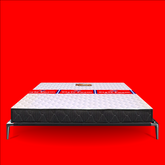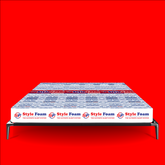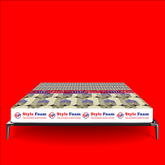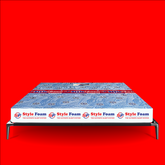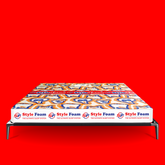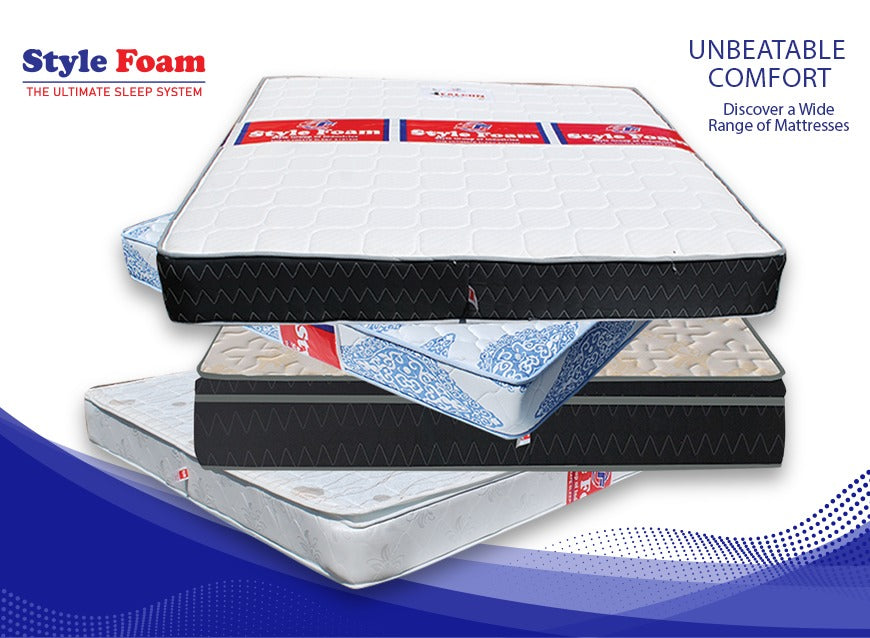Do you wake up feeling more exhausted than when you went to bed? You're not alone. Millions of people struggle with poor sleep, grogginess, back pain, and low energy—without realizing their mattress could be the silent culprit. While we often blame stress, screen time, or inconsistent routines, one of the most overlooked factors in sleep quality is the surface we sleep on.
A good mattress isn't a luxury—it's a necessity. It's the foundation of restorative sleep, physical health, and mental clarity. If you’re tired of waking up tired, read on. This guide will explain why your mattress matters more than you think and how to find the one that fits your body, sleep style, and budget.
Why the Right Mattress Matters
Your mattress plays a pivotal role in your sleep quality. A poorly designed or worn-out mattress can lead to:
-
Back and neck pain
-
Interrupted sleep
-
Tossing and turning
-
Allergies from dust mites
-
Misalignment of the spine
-
Poor posture and stiffness
On the other hand, the right mattress supports your body, keeps your spine aligned, and minimizes pressure points—helping you fall asleep faster and stay asleep longer.
7 Signs Your Mattress Might Be Ruining Your Sleep
-
You wake up sore or stiff
If you’re feeling achy or tight in your back, hips, or shoulders, your mattress may not be offering enough support or cushioning. -
Visible sagging or indentations
A mattress that sags or dips in the middle is a clear sign it’s past its prime. -
You sleep better elsewhere
If hotel beds or your friend’s guest room give you better sleep, it’s a clue your current mattress isn’t working. -
It’s older than 7–10 years
Even high-quality mattresses wear out. If yours is over a decade old, it’s time to shop around. -
You toss and turn all night
Constant movement might mean you’re trying to get comfortable on a surface that just doesn’t support you. -
You and your partner feel each other’s movements
Older mattresses or low-quality innerspring types often transfer motion. A good mattress absorbs movement to avoid disturbances. -
You wake up congested or sneezing
Old mattresses can collect allergens, dust mites, and mold, which trigger allergies and asthma symptoms.
Types of Mattresses: Which One Is Right for You?
Finding the best mattress depends on your sleep position, body type, preferences, and health needs. Here’s a breakdown of the most common mattress types:
1. Memory Foam Mattresses
-
Best for: Side sleepers, people with joint pain, motion isolation
-
Pros: Contours to your body, excellent pressure relief, absorbs motion
-
Cons: Can trap heat, may be too soft for stomach sleepers
2. Innerspring Mattresses
-
Best for: Back sleepers, budget-conscious shoppers
-
Pros: Good airflow, responsive feel, wide price range
-
Cons: Less contouring, can wear out faster, noisy coils
3. Hybrid Mattresses
-
Best for: Combination sleepers, couples, people who want support and comfort
-
Pros: Combines foam and coils, balanced feel, great for all positions
-
Cons: Usually more expensive, heavier
4. Latex Mattresses
-
Best for: Eco-conscious buyers, hot sleepers
-
Pros: Naturally cooling, responsive, durable, hypoallergenic
-
Cons: Higher price point, can feel firm
5. Adjustable Air Mattresses
-
Best for: People with changing comfort needs
-
Pros: Adjustable firmness, great for couples with different preferences
-
Cons: Expensive, potential for mechanical issues
Choosing a Mattress Based on Sleep Position
Your sleeping position directly impacts the kind of support your mattress should offer.
Side Sleepers
-
Needs: Pressure relief in shoulders and hips
-
Ideal mattress: Soft to medium firmness memory foam or hybrid
Back Sleepers
-
Needs: Lumbar support and proper spine alignment
-
Ideal mattress: Medium-firm innerspring, latex, or hybrid
Stomach Sleepers
-
Needs: Firm surface to avoid back arching
-
Ideal mattress: Firm latex or hybrid mattress
Combination Sleepers
-
Needs: Versatility and responsiveness
-
Ideal mattress: Medium firmness hybrid or responsive foam
Mattress Firmness: How to Choose the Right Level
Mattress firmness is subjective, but here’s a general scale:
-
Soft (1–3): Great for lightweight side sleepers
-
Medium-soft (4–5): Ideal for average-weight side sleepers
-
Medium-firm (6–7): Balanced support, works for most sleepers
-
Firm (8–10): Best for heavier individuals or stomach sleepers
Pro tip: Your weight also plays a role. Heavier individuals may need a firmer mattress to prevent sinking, while lighter sleepers often prefer softer surfaces.
Additional Features to Consider
Cooling Technology
If you sleep hot, look for gel-infused memory foam, breathable latex, or hybrid models with airflow.
Edge Support
A mattress with reinforced edges prevents sagging and makes it easier to sit or sleep near the edge.
Motion Isolation
If you share a bed, motion isolation is key to undisturbed sleep—especially if one partner moves a lot.
Certifications
Look for materials that are CertiPUR-US or OEKO-TEX certified to ensure safety and non-toxic components.
How Much Should You Spend on a Mattress?
Prices range widely—from $300 budget models to $3,000+ luxury options. Here's a general idea:
-
Budget range ($300–700): Basic foam or innerspring, good for temporary use
-
Mid-range ($800–1500): Quality hybrid or memory foam with good support
-
Premium ($1500+): Advanced cooling, luxury materials, superior durability
While you don’t need to spend a fortune, remember: you’ll spend a third of your life on this purchase. Think of it as an investment in your health.
Online vs. In-Store: Where Should You Buy?
Online
-
Pros: Lower prices, free delivery, 100+ night sleep trials
-
Cons: You can’t test it first, but generous return policies help
In-Store
-
Pros: Test before buying, in-person advice
-
Cons: Higher prices, limited return windows
Best of both worlds: Try in-store and buy online—or use online trials to test at home without pressure.
Tips for Extending the Life of Your Mattress
To get the most out of your investment:
-
Use a mattress protector to prevent stains and allergens
-
Rotate every 3–6 months to distribute wear
-
Keep it supported with a proper foundation or bed frame
-
Avoid jumping or placing heavy objects to prevent damage
-
Vacuum and air it out regularly
Final Thoughts
If you're tired of waking up tired, your mattress could be the missing piece. The right mattress aligns your spine, supports your body, and creates the perfect environment for deep, restorative sleep. And with so many high-quality options on the market today—many of which come with long trial periods and warranties—there’s no reason to settle for sleepless nights.
So listen to your body. If your bed isn’t helping you wake up refreshed, it might be time to make a change. After all, great days start with great nights—and that starts with a better mattress.
Ready to Sleep Better?
Start your mattress journey today. Research your sleep style, test options, and don’t be afraid to invest in quality rest. Because you deserve more than sleep—you deserve restorative, energizing, life-changing sleep.

